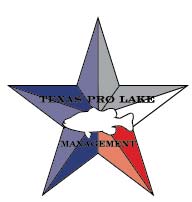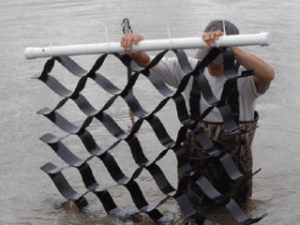 Awesome. Tremendous. Terrific. That’s the way that state conservation directors (CD) for the B.A.S.S. Federation Nation summed up their experience at the recent Conservation Summit in Shreveport, La.
Awesome. Tremendous. Terrific. That’s the way that state conservation directors (CD) for the B.A.S.S. Federation Nation summed up their experience at the recent Conservation Summit in Shreveport, La.
Staged during Bassmaster Classic Week, the event featured 2 ½ days of presentations and discussions on issues of concern to bass anglers nationwide. Fisheries experts from universities also attended, as did fish chiefs and biologists from state and federal agencies.
“The Conservation Summit was terrific,” said Scott Sowell, veteran CD from Maryland. “Noreen (National Conservation Director Noreen Clough) did a fantastic job putting it together, and I left fired up to spread the word on keeping bass alive!
“It was great interacting with CDs and fisheries biologists from all over the country. I learned quite a bit about conservation issues and practices in other states and steps they take to protect the fishery.”
Clough called the Summit “a huge success,” but wanted no credit for it being so. “I was impressed with the number of states who recognized the value of this and attended,” she said.
“And it was capped off by a variety of academics like Dave Philipp from the University of Illinois, Mike Allen from the University of Florida and Jeff Koppelman from the Missouri Department of Conservation. They stimulated thought and conversations.”
Those three joined Gene Gilliland from the Oklahoma Department of Wildlife Conservation and others as presenters on Day 2 of the event, billed as a Fisheries Management Workshop.
“We talked about the state of the science on black bass issues,” Gilliland said. “We made presentations on some of the more controversial issues, such as fishing for spawning bass, to give the CDs a feel for what is going on, and then we had question-and-answer time.”
Based on the presentations and follow-up breakout sessions, attendees then identified major management issues for black bass fisheries. They include the following:
- Fish care during tournaments, with pro anglers serving as role models.
- Introduction of native and non-native species, including anglers who illegally move fish.
- Large-scale habitat projects, with federal involvement.
- Current and future water wars, and the need for anglers to partner with U.S. Forest Service, the U.S. Fish and Wildlife Service (FWS) and the states to ensure allocations for fisheries.
- Fostering better relationships with fisheries agencies.
The Summit also included national and state legislative updates from Gordon Robertson of the American Sportfishing Association and Chris Horton, Mid-States Coordinator for the National Assembly of Sportsmen Caucuses. The two also led a discussion on working with legislators.
“You have to engage politically because management of our natural resources often is political instead of biological,” Horton said.
On the Summit’s final day, Gilliland explained the process behind fisheries management, and fish chiefs provided the “state perspective” on building partnerships.
See the dozens of unique artificial fish habitat models, fish attractors and fish cover used at fishiding.com, the leader in proven science based, fish protection.
Additionally, representatives from the FWS talked about that agency’s programs and the 75th anniversary of the Sportfish Restoration Program (also known as Wallop-Breaux), which provides millions of dollars annually for state fisheries management through excise taxes on fishing gear.
2012 Bassmaster Classic Official Sponsors: Toyota, Bass Pro Shops, Berkley, Evan Williams Bourbon, Humminbird, Mercury, Minn Kota, Nitro Boats, Skeeter Boats, Triton Boats, Yamaha
2012 Bassmaster Classic Supporting Sponsor: Carhartt
About B.A.S.S.
For more than 40 years, B.A.S.S. has served as the authority on bass fishing. The organization advances the sport through advocacy, outreach and an expansive tournament structure while connecting directly with the passionate community of bass anglers through its Bassmaster media vehicles.
The Bassmaster brand and its multimedia platforms are guided by a mission to serve all fishing fans. Through its industry-leading publications — Bassmaster Magazine and B.A.S.S. Times — comprehensive website Bassmaster.com and ESPN2 and Outdoor Channel television programming, Bassmaster provides rich, leading-edge content true to the lifestyle.
The Bassmaster Tournament Trail includes the Bassmaster Elite Series, Bass Pro Shops Bassmaster Open Series, Carhartt Bassmaster College Series, Cabela’s B.A.S.S. Federation Nation events and the ultimate celebration of competitive fishing, the Bassmaster Classic.
B.A.S.S. offers an array of services to its more than 500,000 members and remains focused on issues related to conservation and water access. The organization is headquartered in Birmingham, Ala.By Staff Writer












